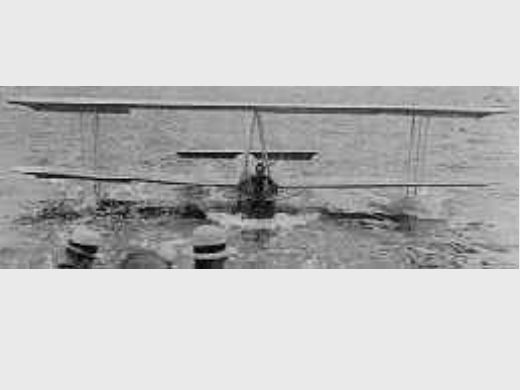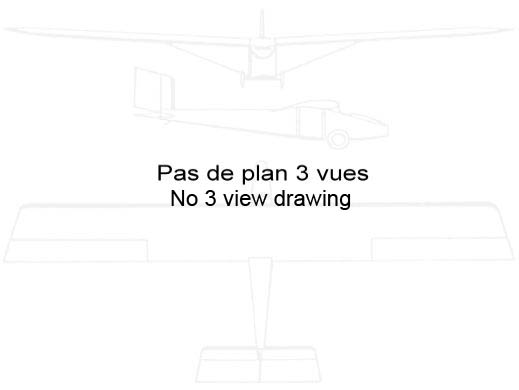
Peel Z-1 Glider Boat
| DONNÉES GÉNÉRALES |
| Année du premier vol (ou de design, si seul projet) |
1930 |
| Pays | USA |
| Designer(s) | PEEL |
| Premier constructeur | Peel Glider Boat Corporation, College Point, Queens (USA) |
| Type d'appareil | Hydroplaneur Biplan |
| Fonction | Entraînement |
| SPÉCIFICATIONS TECHNIQUES |
| Envergure | 9.45 m |
| Longueur | 7.3 m |
| Hauteur | -- |
| Allongement | -- |
| Surface alaire | 25.08 m2 |
| Profil aile | -- |
| Masse à vide | 113 kg |
| Masse maxi | 272 kg |
| Charge alaire | 10.84 kg/m2 |
| Vitesse mini | -- |
| Vitesse maxi | -- |
| Finesse maxi | 15 |
| Taux de chute mini | -- |
| Nb sièges | 2 |
| Structure | Fuselage coque entièrement en duralumin (ainsi que les deux flotteurs). Ailes en bois et entoilées. |
AUTRES INFORMATIONS
SOURCES DOCUMENTAIRES
| Liens WEB | Site : AirVenture Museum . Texte + photo. (2010-01-21 CL) Site : Cradle of Aviation Museum . Note + affiche. (2023-03-08 CL) Site : Alex Sailplane Directory . Note + 1 photo + specs. (2010-01-21 CL) Site : Wings of History . Mention du planeur loué par le National Soaring Museum. (2010-01-21 CL) Site : Airport Data . 4 photos. (2023-03-08 CL) |
| Livres | Pas de livre référencé. |
| Autres sources | The Peel Glider Boat, SAM 21 Clipper n°115, janvier 2010. Texte + 2 photos. |

Team J2mcL © 2003 -
- Pages optimisées pour Mozilla Firefox


